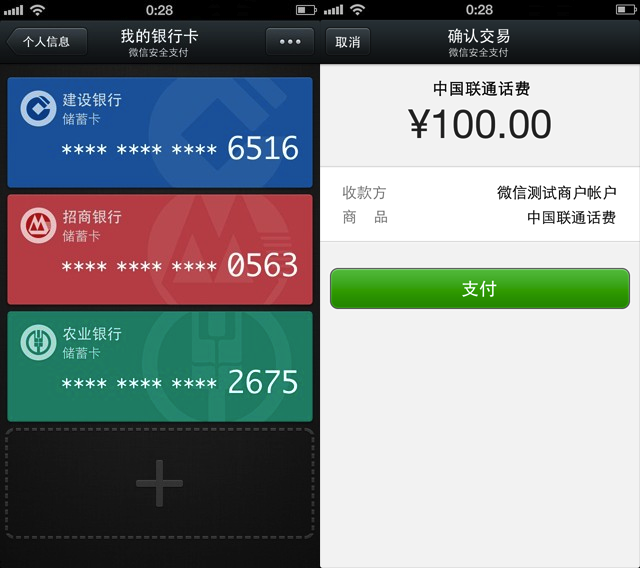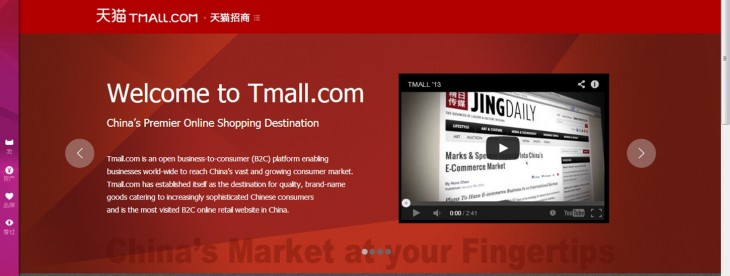
China is the world’s most populous country with 1.3 billion people, so it’s not a great surprise that the country is a huge market for e-commerce. 2013 has shown that e-commerce is the next big wave for the technology scene in China, as Internet giants work hard to make it even easier for people to shop online, and as companies find different ways to reach consumers, such as via chat apps.
A report by management consulting firm Bain & Co notes that “the year 2013 will be remembered as the one in which China surpassed the US as the world’s largest digital retail market.” It also observes that the “wildfire-like adoption of digital retailing over the past two years is staggering” in China.
Last year, Chinese e-commerce shoppers spent CNY1.3 trillion ($213 billion) online, just slightly below the $225 billion that US online shoppers spent in all — and as the year ends, China would have surpassed US to take the online shopping crown.
The Bain report also notes that the Chinese e-commerce market figure has grown more than 70 percent annually since 2009, and projects that it will reach CNY3.3 trillion ($543 billion) by 2015.
Chinese e-commerce retailers are juggernauts
In 2013, the highlight event of the year was when Chinese shoppers splurged a jaw-dropping record CNY35.01 billion ($5.7 billion) in just 24 hours during the 11.11 Shopping Festival held by e-commerce giant Alibaba — China’s answer to America’s Cyber Monday shopping bonanza.
For an indication of the kind of growth that has occurred, the 11.11 promotion’s inaugural year of 2009 generated a ‘mere’ CNY50 million ($8 million) in sales.
Alibaba, which has seen transactions on its e-commerce platforms top that of Amazon and eBay combined, is also expecting to overtake Walmart in 2016 as the world’s biggest retail firm.
Earlier this year, Alibaba CEO Jonathan Lu said that the company is aiming to nearly triple the volume of transactions on its marketplace platforms to about CNY3 trillion ($490 billion) by 2016, surpassing US giant Walmart.
And Alibaba isn’t the only e-commerce retailer in China — its rival JD.com, China’s second-largest e-commerce site, is set to exceed CNY100 billion ($16.5 billion) in annual sales for the first time in the country. Richard Liu, JD.com’s founder and CEO, notes that this figure is a “10,000-fold increase from our first year of operations and a two thirds increase from last year.”
All this increased spending by consumers speaks volumes about the fact that online shopping has become a way of life for Chinese consumers — and in 2013 it has become clear that e-commerce is here to stay and grow even more.
Payments and logistics are key concerns
As e-commerce saw record growth in China in 2013, payment solutions and logistics have become even more important — and those areas are where Chinese e-commerce companies have turned their focus to.
Just look at Chinese e-commerce giant Alibaba. In May, it set up a logistics network project seeking to boost the delivery of products purchased online. The first stage of investment stood at CNY100 billion ($16.3 billion), with Alibaba aiming to build a network that can support an average 30 billion yuan ($4.9 billion) worth of daily online shopping transactions within 5-8 years. Other reports also noted that the network would allow the delivery of products across China within 24 hours.
Earlier this month, the company revealed that it is investing $364 million into electronics manufacturer Haier Group as it looks to extend its logistics and delivery capacity.
Meanwhile, 51Buy, an e-commerce site owned by another Chinese Internet giant Tencent, is reportedly building more than 10 logistics bases in cities across China, and working with third-party logistics partners to offer collect-on-delivery services in 1,000 cities across the country. In the future, it is said that it will start offering expedited delivery services, including two-hour guaranteed delivery to customers.
As for payments, Alibaba has been working hard to ensure that its Alipay solution reaches more consumers. Already, the company says that Alipay has about a 50 percent market share in China’s e-payment market, and claims that about 25,000 Alipay mobile transactions take place every minute, resulting in a daily transaction value of more than CNY20 billion ($3.3 billion) on Alipay.
At the same time, its fierce Chinese competitor — Tencent-owned Tenpay — is also escalating its efforts to integrate with messaging service WeChat so that consumers can access it easily.
Even Hugo Barra, former Google VP for Android and now vice president of Xiaomi Global, observed the power of e-commerce in China and chatted about the trends of same-day delivery, real-time tracking and Chinese payment solutions at LeWeb 2013.
The rise of m-commerce
Which brings us to the next 2013 trend in e-commerce: mobile.
China is the world’s largest smartphone market and it therefore isn’t surprising that many consumers are starting to shop more on their mobile devices, given the convenience it brings.
During its 11.11 shopping festival, Alibaba revealed that about 21 percent of orders were being placed via mobile devices — up from a mere 5 percent a year earlier — an indication of how mobile is gaining importance among Chinese shoppers.
Meanwhile, JD.com says more than 15 percent of the orders passing through its site are placed via mobile apps.
It is little wonder that in 2013, companies have been wooing consumers to shop on their mobile devices.
In October, Alibaba announced that it would give certain mobile users free access of up to 2 gigabytes of data in November and December, when they shop with Alibaba’s apps for the company’s Taobao Marketplace, Tmall.com, Juhuasuan, Laiwang and Alipay.
In November, the e-commerce giant launched a scheme to give away free smartphones as part of its efforts to encourage merchants to shift from PC-based online shopping to shopping via mobile phones — by helping them work better on this new platform.
M-commerce is also presenting itself in another channel: messaging apps.
This trend only surfaced this year, and is especially pronounced in China with Tencent-owned messaging service WeChat, which is wildly popular in China.
As Tencent also owns payment service Tenpay, WeChat’s team can easily tap on the technology to settle the necessary backend work. Tencent already rolled out an update to Weixin in August, incorporating payment services. All users have to do is link an online banking account to Weixin to pay for items and they are good to go.
Earlier this year, WeChat was used to sell Xiaomi smartphones in China earlier this year — with 150,000 units sold in under 10 minutes, no less.
Overseas markets beyond China are the next aim
Another direction that Chinese e-commerce will move in more pronouncedly in 2014 is overseas.
According to market research firm iResearch, the value of transactions in China’s cross-border e-commerce market reached CNY2.3 trillion ($510 billion) in 2012, up 31.5 percent compared with 2011. This is only set to increase further, going by the indications that have surfaced this year.
Just today, PayPal jumped into the fray — as the company inked a deal with one of China’s largest postal providers and the owner of the largest international mail exchange office in China — Beijing Post — to create an international logistics solution known as PayPal Package. This would help improve overall shipping experience as it is expected to cut down the amount of time for Chinese merchants to deliver overseas.
Moving overseas does not just apply to foreign companies entering China — it also refers to the reverse: Chinese e-commerce companies going global.
In September, Alibaba launched its Taobao marketplace in Singapore, seeking to make its mark in Southeast Asia after using Hong Kong and Taiwan as a stepping stone a year ago to make the jump overseas. Its e-commerce rival JD.com also earlier announced a strategic partnership with IT products group iKnow to launch JD.com’s Singapore site and pick-up stations for purchases made online.
Alibaba has even made a significant play for Western companies this year after it launched an English-language microsite for Tmall.
The new year is all for m-commerce
It is expected that in 2014, the e-commerce shift to m-commerce in China will become even more pronounced.
The glut of low-cost Android devices, along with the fact that more and more public places in China are getting free Wi-Fi as part of the government’s efforts to promote Internet usage, will no doubt lead to more shopping being done on mobile devices. For companies to take advantage of this wave, they will need to ensure their mobile apps are user-friendly, visually engaging and easily searchable — and this is probably the direction they they will head into for the new year.
Furthermore, as chat apps become even more platform-like, it looks like e-commerce will be a huge part of their future — and this is something that will become even more developed in 2014.
Headline image via ChinaFotoPress/Getty Images, images via Getty Images, Getty Images and Getty Images
Get the TNW newsletter
Get the most important tech news in your inbox each week.









